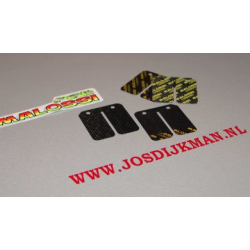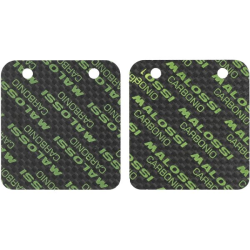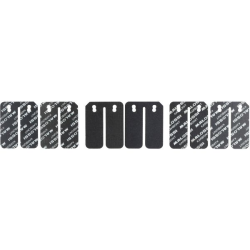The best scooter shop in 2025
Membrane plates
Membrane Plate Set MHR VL13
Membraanplaatje V-Force Minarelli AM6
Membrane Plate Set MHR VL14 45 Degrees
Membraanplaat Malossi Karbonit 0.50MM
Membraanplaatset Carbon Voca Minarelli Horizontaal
Membraanplaatset VL13 MHR Piaggio Malossi
Membrane plate Malossi Carbon 0.30MM
Reed Valves: Essential Components for the Performance of your Moped
Reed valves are essential parts of moped and scooter engines. They play a crucial role in the functioning of the engine and affect the performance and efficiency. In this text, we will address questions about what a reed valve is and where you can find the reed valve in your moped.
What is a reed valve?
A reed valve is a thin, flexible plate used in the intake of a two-stroke engine. The reed valve regulates the air and fuel supply to the engine's combustion chamber. Here are some key functions and features of reed valves:
-
Regulating the Airflow: The reed valve opens and closes based on the pressure differences that arise during the operation of the engine. When the engine is sucking in, the reed valve bends inwards to allow air and fuel. When the pressure rises, the plate closes to prevent backflow.
-
Improving Engine Performance: By optimally regulating the air and fuel supply, the engine can work more efficiently, resulting in better acceleration and power. A well-functioning reed valve is crucial for the overall performance of your moped.
-
Materials and Durability: Reed valves are typically made of high-quality rubber or composite materials, which provide flexibility and durability. It is important to regularly check the condition of the reed valves, as wear or damage can lead to reduced performance and efficiency of the engine.
Where is your reed valve located?
The reed valve is usually located in the carburetor or the intake port of the moped. Here are some details about the location and function:
-
Location: In most two-stroke mopeds, the reed valve can be found in the intake part of the carburetor, where it regulates the air and fuel supply. In some models, the reed valve is also located in the cylinder's intake port.
-
Accessibility: It is usually easy to access the reed valve by disassembling the carburetor or intake port. This makes it possible to inspect the reed valve for wear and replace it if necessary.
-
Maintenance and Replacement: Regular maintenance of the reed valve is essential to ensure the optimal operation of the engine. Check the reed valve for cracks, deformations, or other damages. In case of signs of wear, it is advisable to replace the valve to prevent your engine from running inefficiently.

 Nederlands
Nederlands






